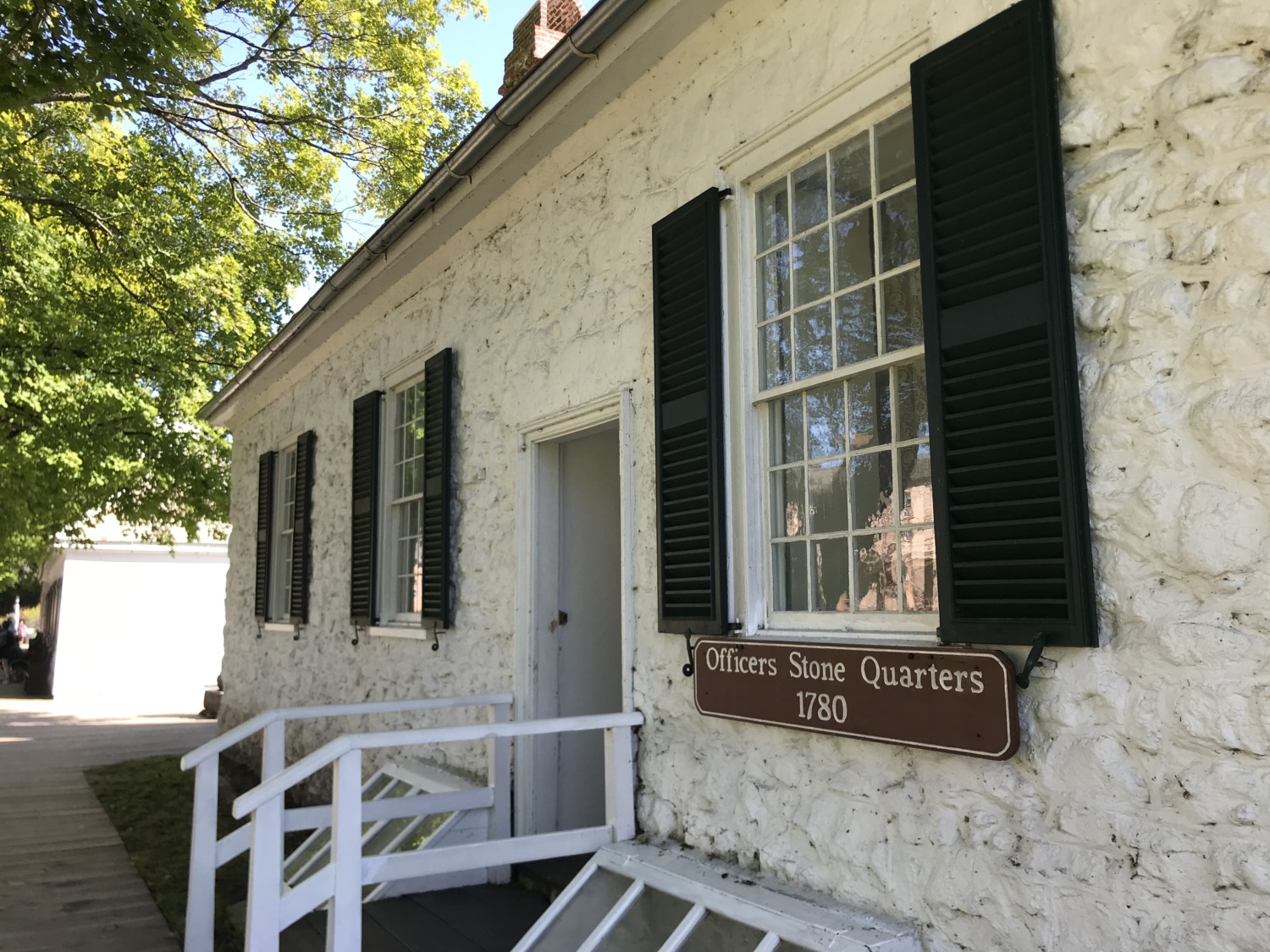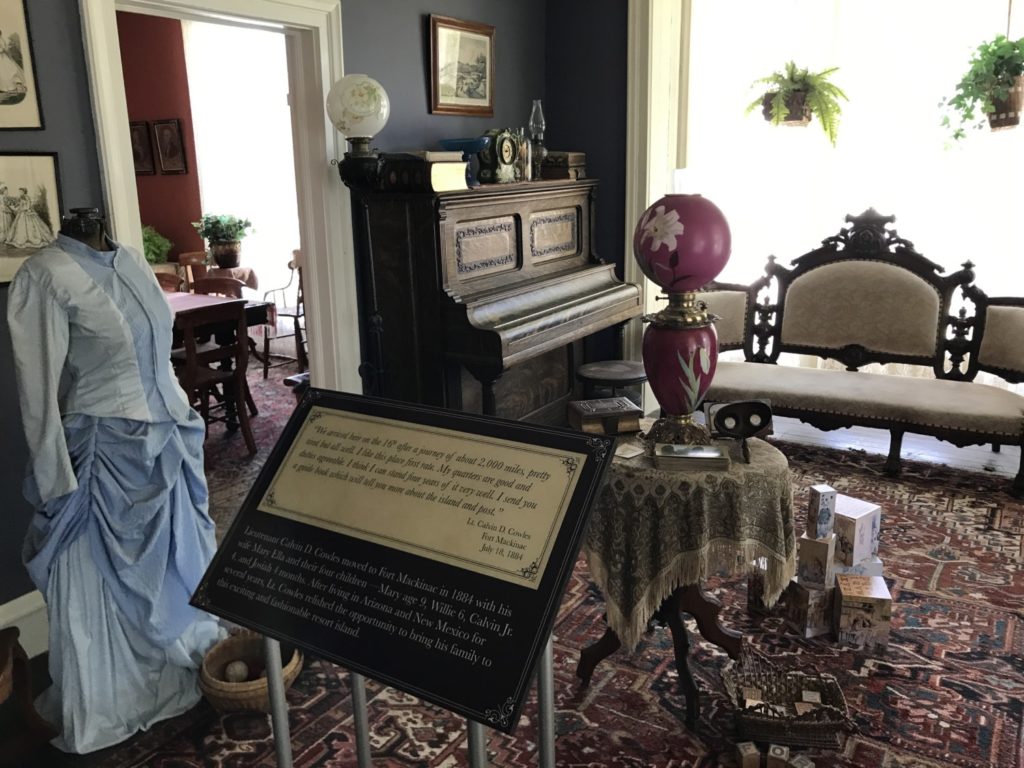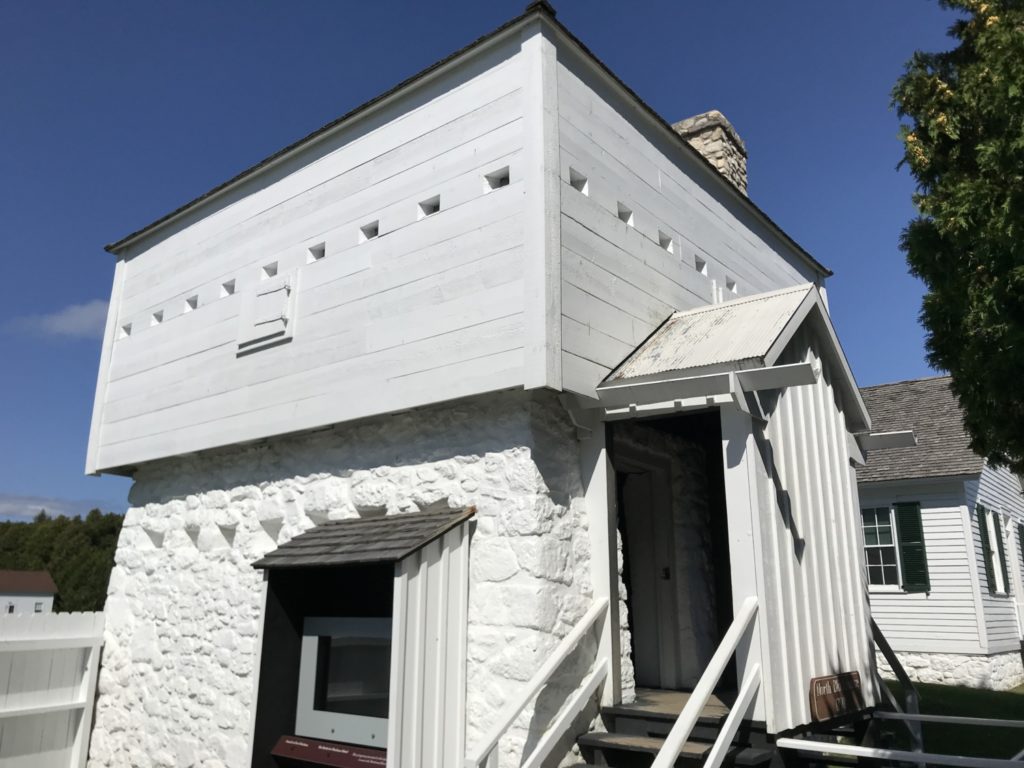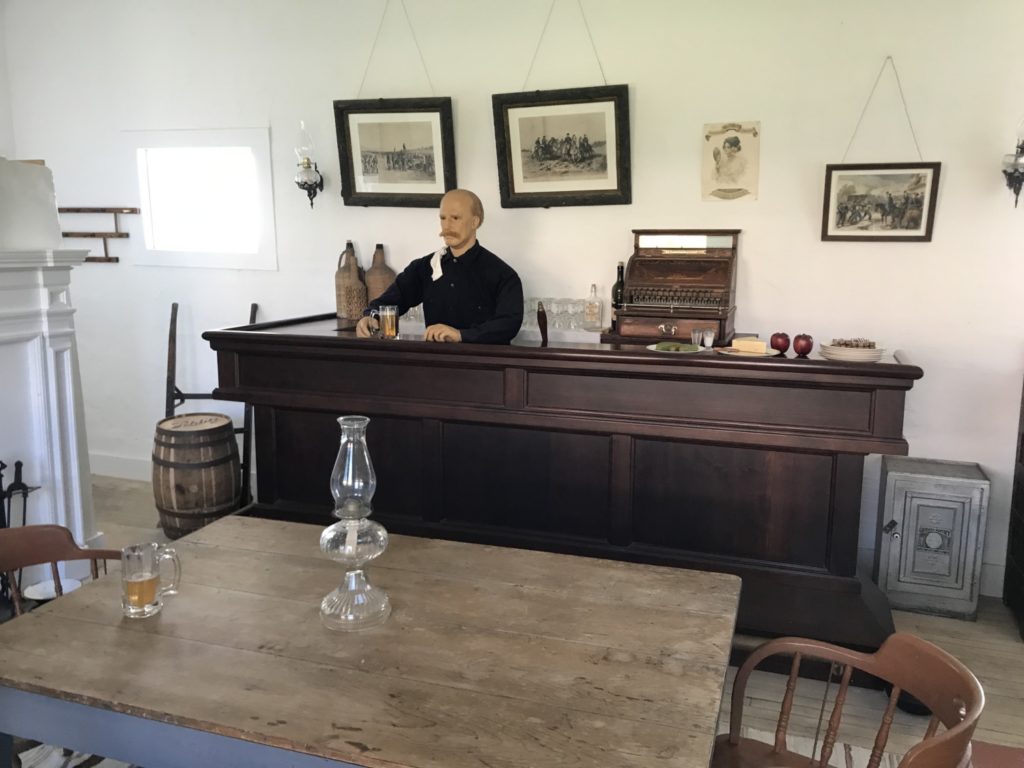The most important place for us to visit on Mackinac Island was Fort Mackinac. This island fort is not to be confused with Fort Michilimackinac, which I wrote about last week. Fort Michilimackinac was built by the French and was a center of the fur trade with as many Native Americans and European Americans in the fort. Fort Michilimackinac is in Mackinaw City, on the mainland of Michigan. Today it is called Colonial Michilimackinac to try to avoid confusion.
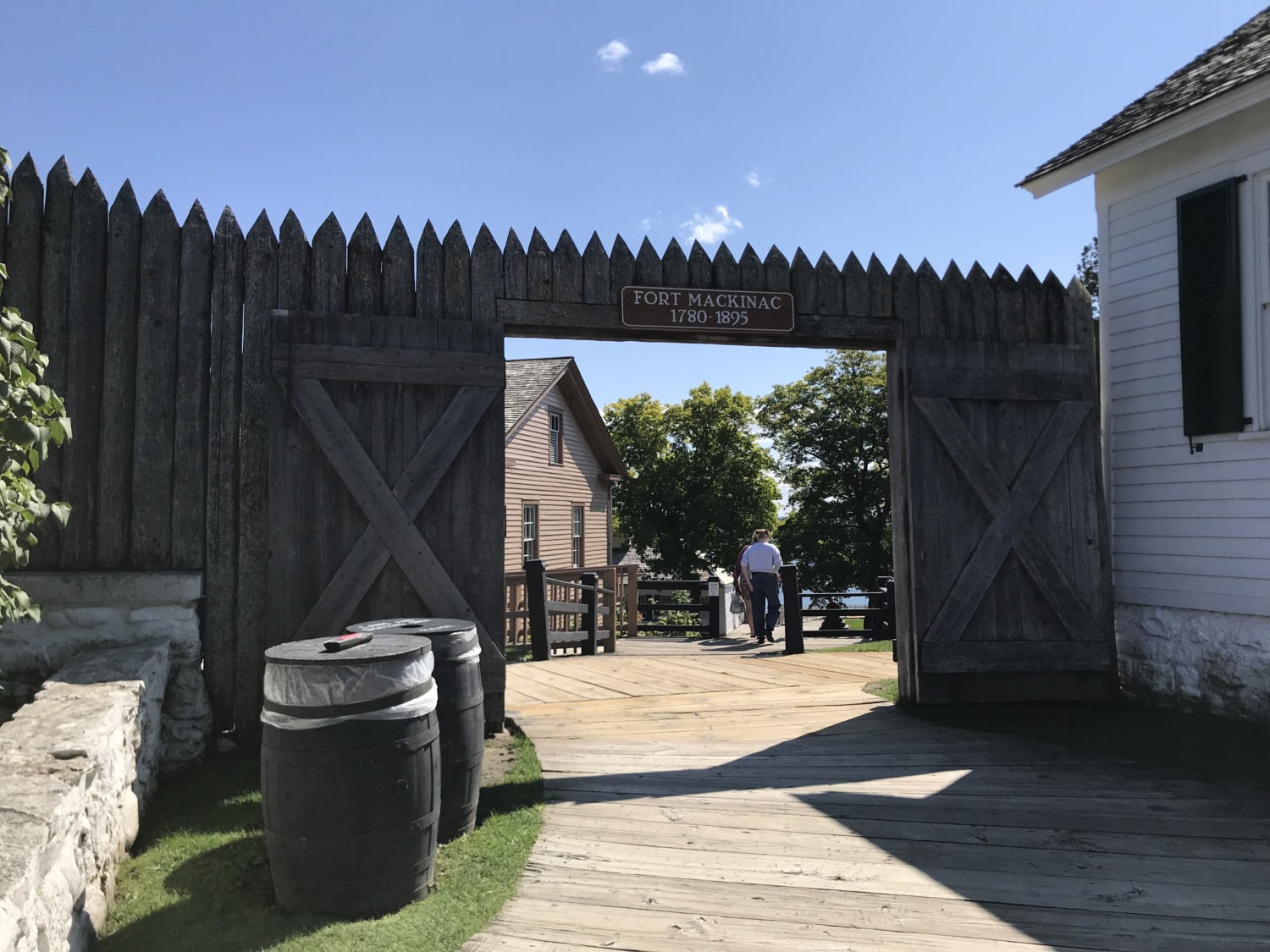
Fort Mackinac, on the other hand, was built on Mackinac Island in 1780 when the British decided Fort Michilimackinac was too vulnerable to American attack. Americans took control of the fort in 1796. In July 1812, the British captured the fort in the firs land engagement of the War of 1812. It was returned to the United States after the war. The fort remained active until 1895. Both forts are part of the Mackinac State Historic Parks and our membership covered our admission.
We were dropped off at Fort Mackinac on our carriage tour. Not many people visit the fort on the island because there are so many other things to do. Plus, it is an additional fee. There were only 20 people in the fort when we were there on a beautiful September afternoon. We showed our membership receipt at the gate and picked up a wheelchair for Bob. Then we went into the fort.
There are 17 restored buildings at Fort Mackinac, so just going through all the buildings takes quite a while. Each building had some kind of display and several living history interpreters were scattered around the grounds for demonstrations and questions. The living history interpreters are kept busy all day with different demonstrations and programs. On the day we were there, they had five cannon and rifle firing demonstrations with five different programs. Very ambitious, especially considering the number of visitors.
Some of the buildings are furnished as they were during the 1890’s. The fort was basically abandoned during the Civil War and we wondered why it was still used by soldiers until 1895. The answer lies in the island’s history. Mackinac Island was declared a National Park in 1875. Mackinac National Park was the second National Park in the United States. At that time there was no National Park Service, so the army was in charge of running the park. The fort’s commander ran the park and federal troops served as park rangers. The park had the authority to construct roads and trails and to lease small numbers of lots for buildings to offset the expenses. No federal money was provided to run the park.
In 1895, the fort was decommissioned. At the request of Michigan Governor John T. Rich, the park and fort were turned over to the State of Michigan, becoming Mackinac Island State Park, the first state park in Michigan. The park was established on the condition that it remain a state park or it would revert to the United States. Today, over 80% of the island is part of Mackinac Island State Park.
We really enjoyed wandering around the historic buildings and seeing the museum exhibits about life on the island and at the fort. Fort Mackinac was opened as a living history museum in 1959. They have done a good job keeping the buildings restored and interpreting life at the fort. We were especially impressed with their maintenance. A broken step was reported by some other visitors when we first arrived, and, by the time we left, a maintenance man had fixed it.
They had an excellent gift shop that covered lots of different subjects. I found a puzzle for my mom and used my membership receipt to get 20% off.
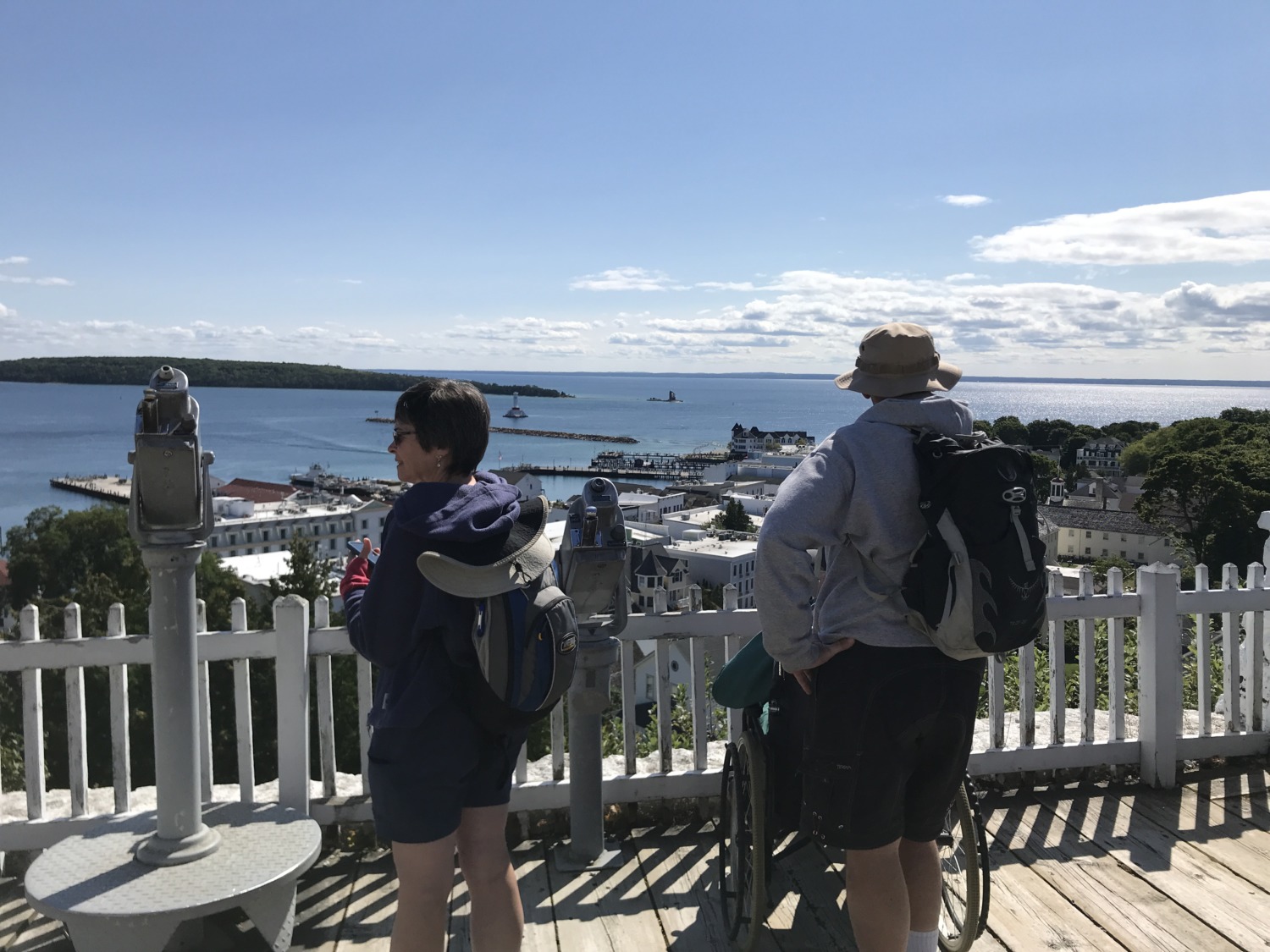
The views from Fort Mackinac are especially impressive. The fort sits at the highest point of the island and you have a great view of the town, the state park, and Lake Huron. The Tea Room, operated by the Grand Hotel, is open all day serving snacks, beverages, and desserts. Sitting on the deck by the Tea Room lets visitors enjoy the view at their leisure.
Fort Mackinac is open from the beginning of June through the end of October. The fort is closed from the end of October until the beginning of June. Adult single day admission was $15.50 in 2022.
Our membership in the Mackinac State Historic Parks also gave us admission to two other historic places on the island: Mackinac Art Museum and Biddle House. We weren’t interested in visiting the art museum and Biddle House was closing as we were leaving the fort. But we were satisfied with what we saw and learned at the fort. It was a very interesting visit and well worth the time.

